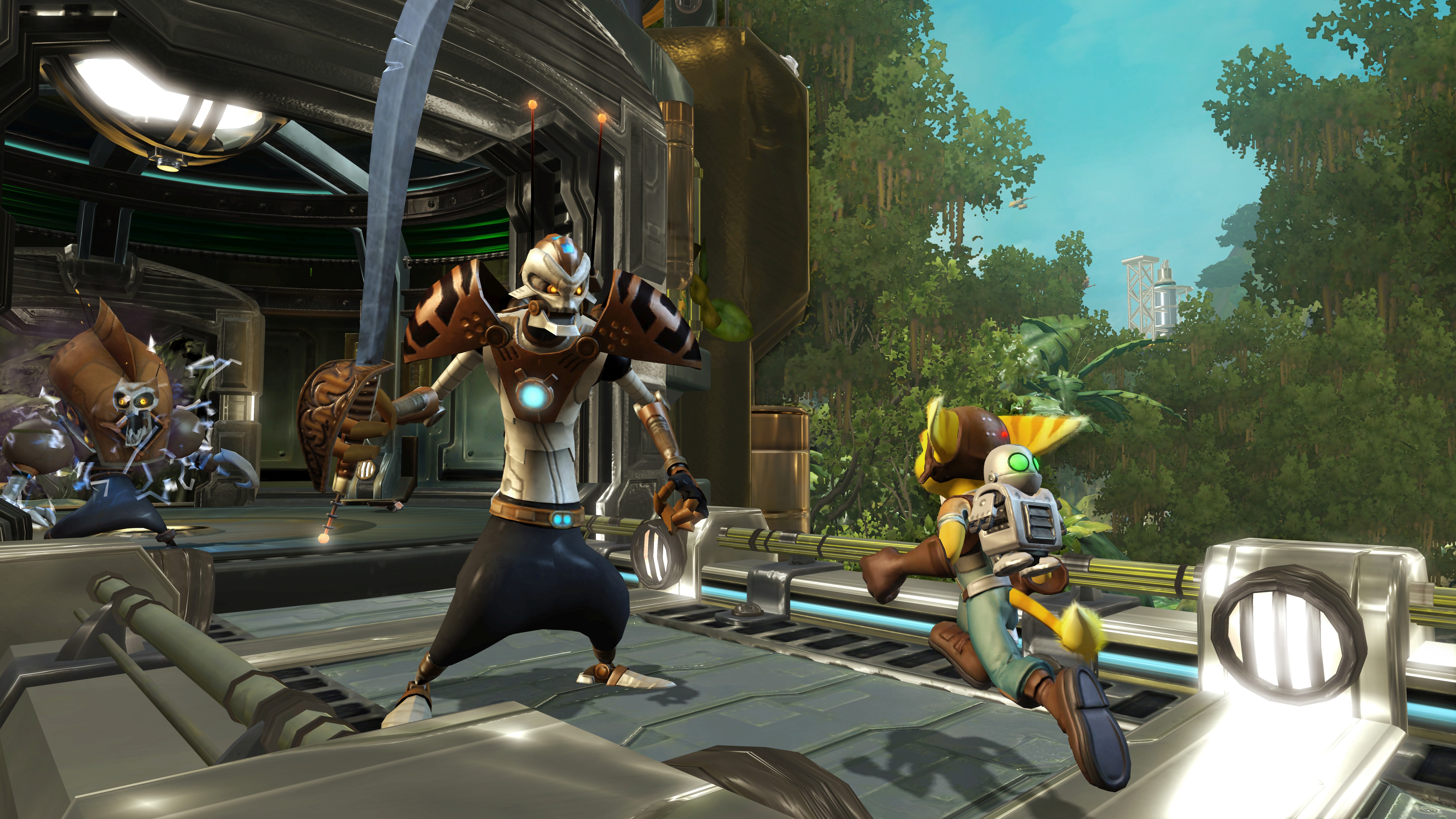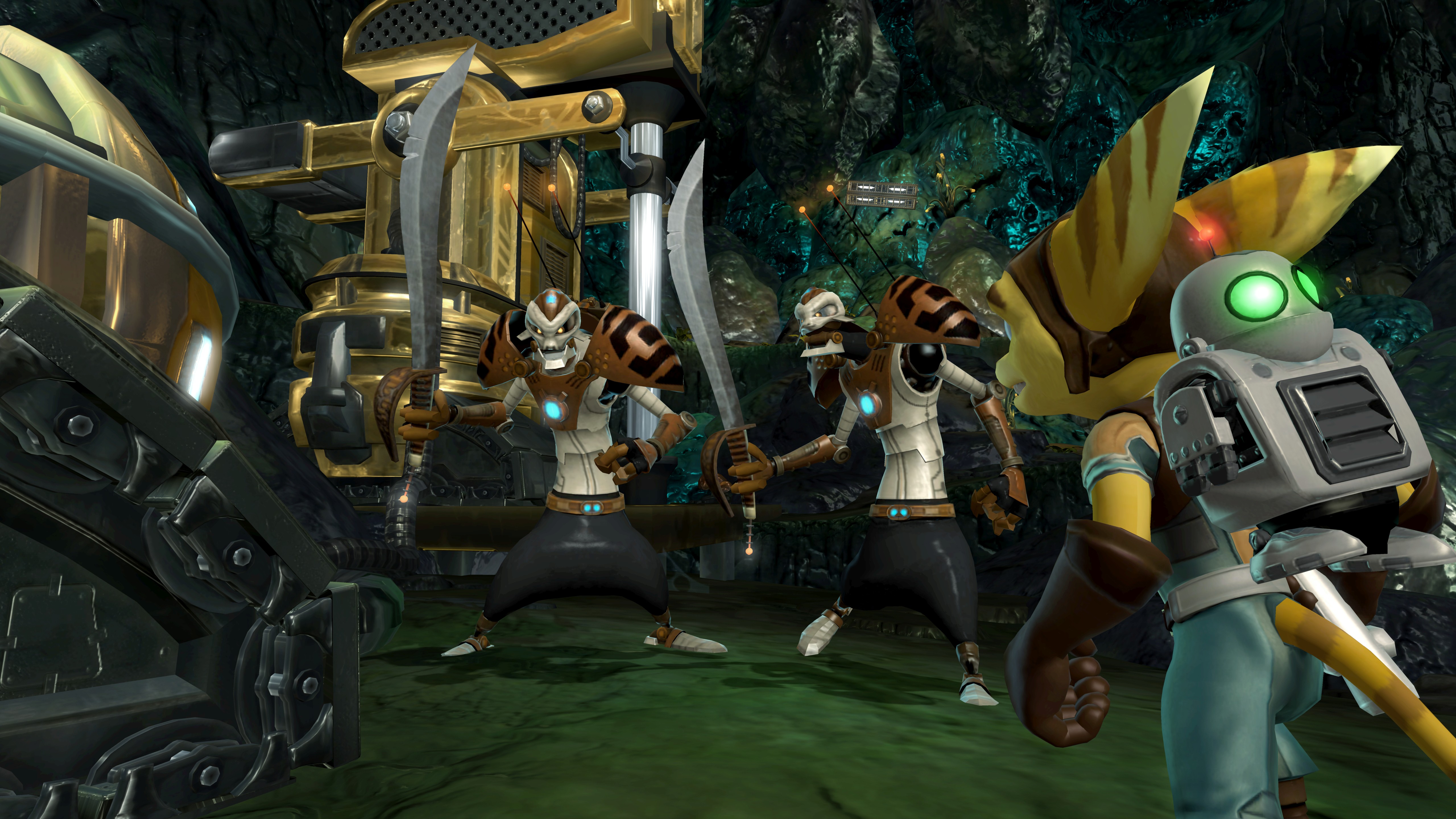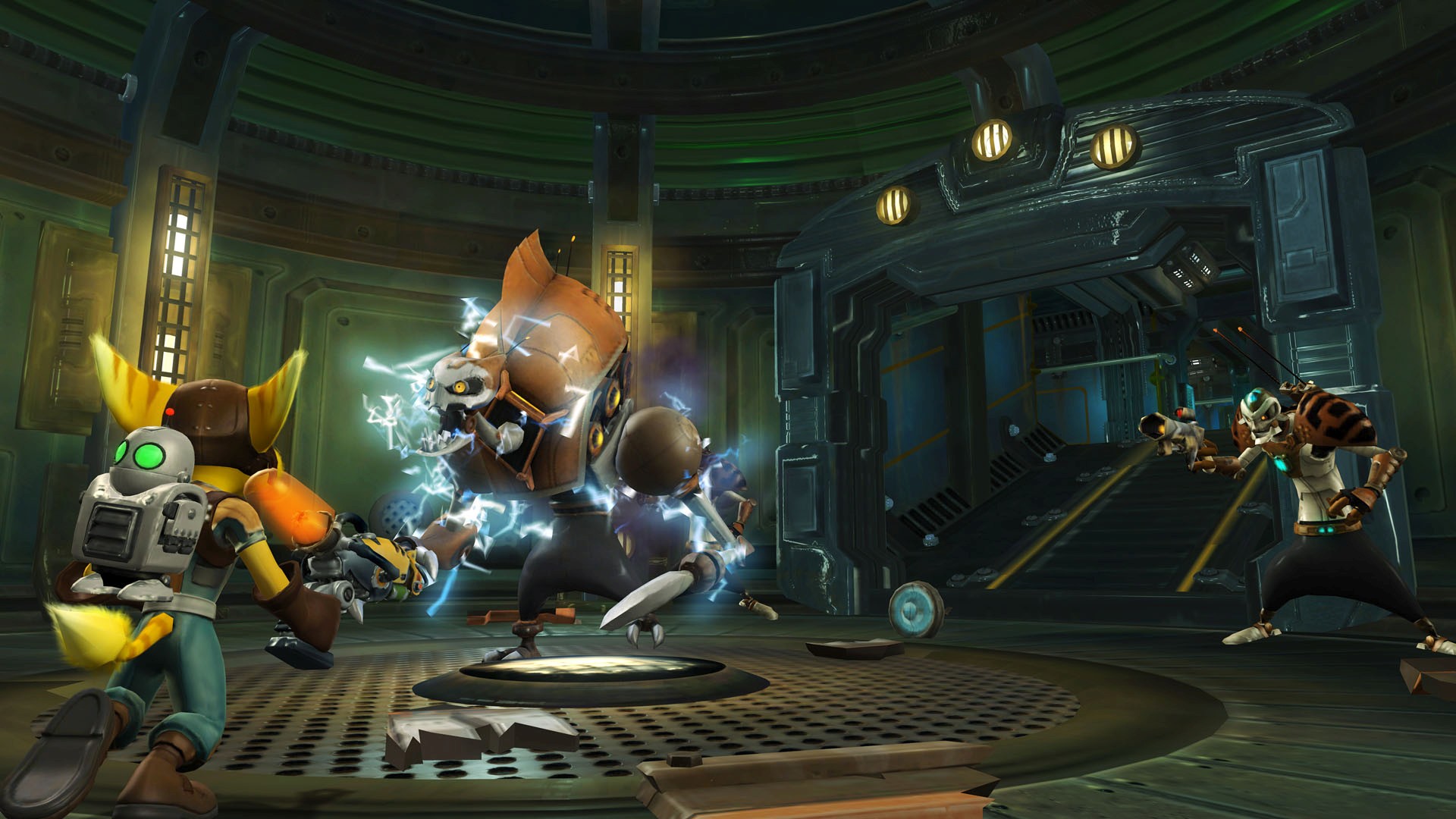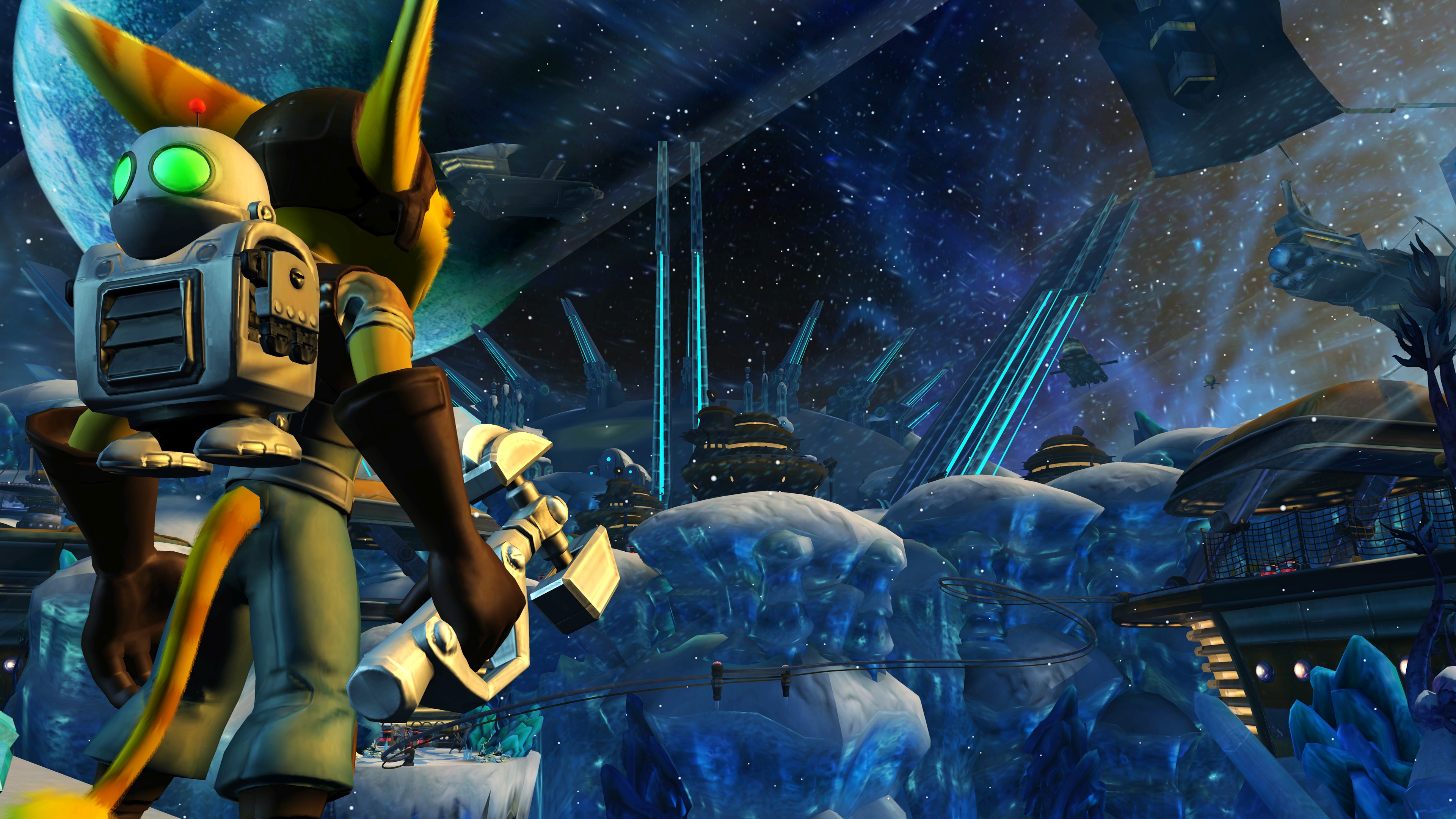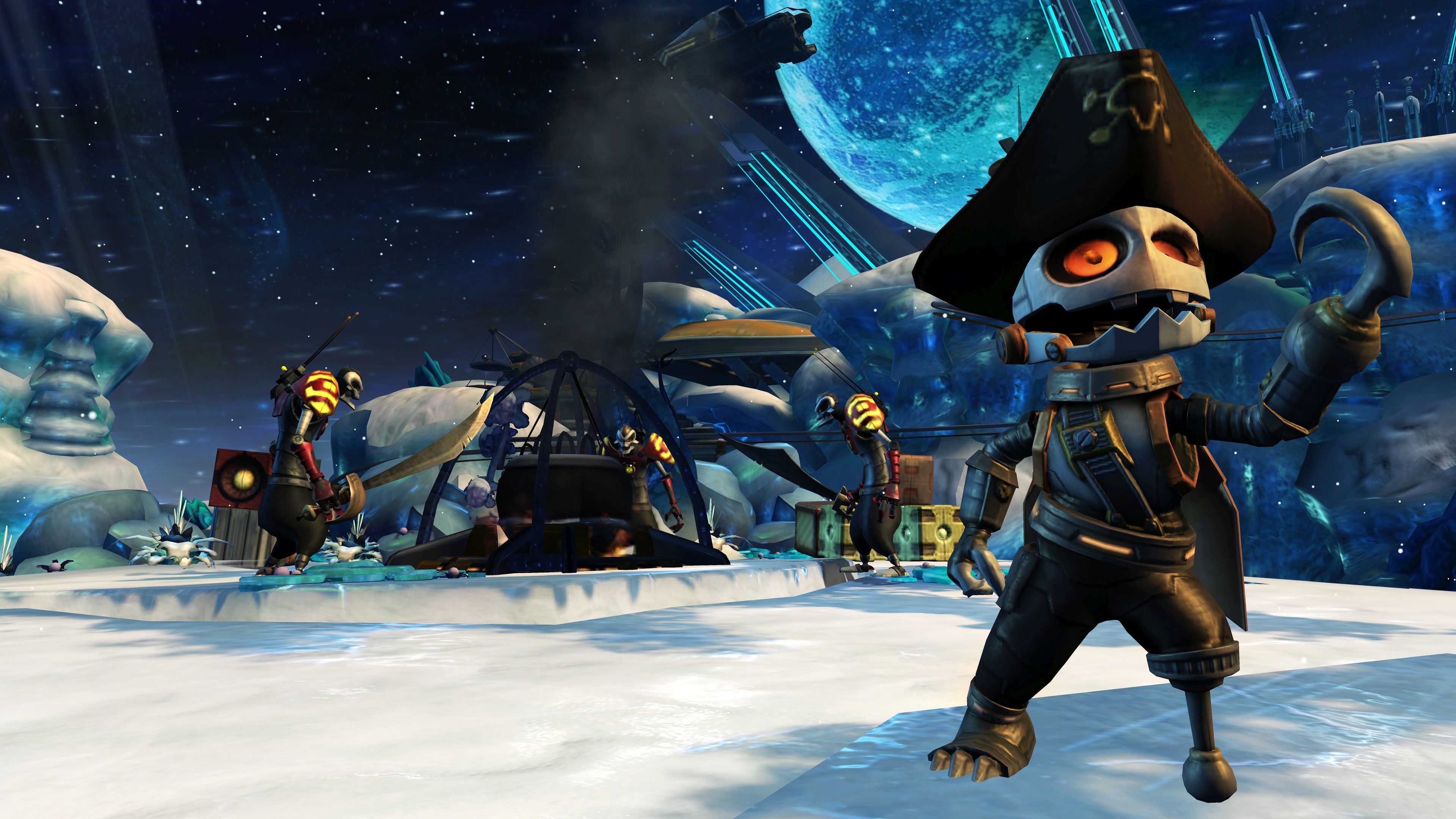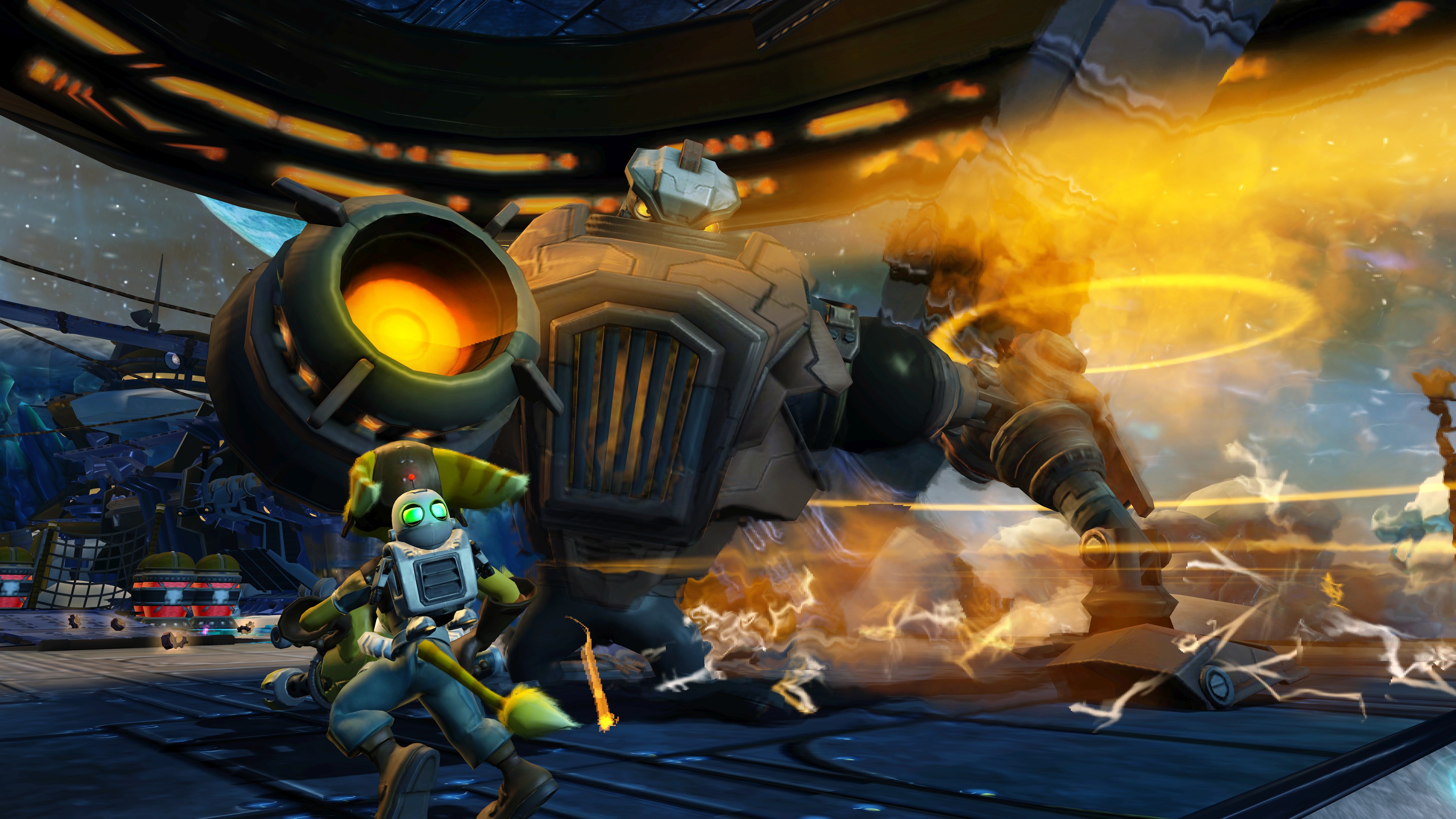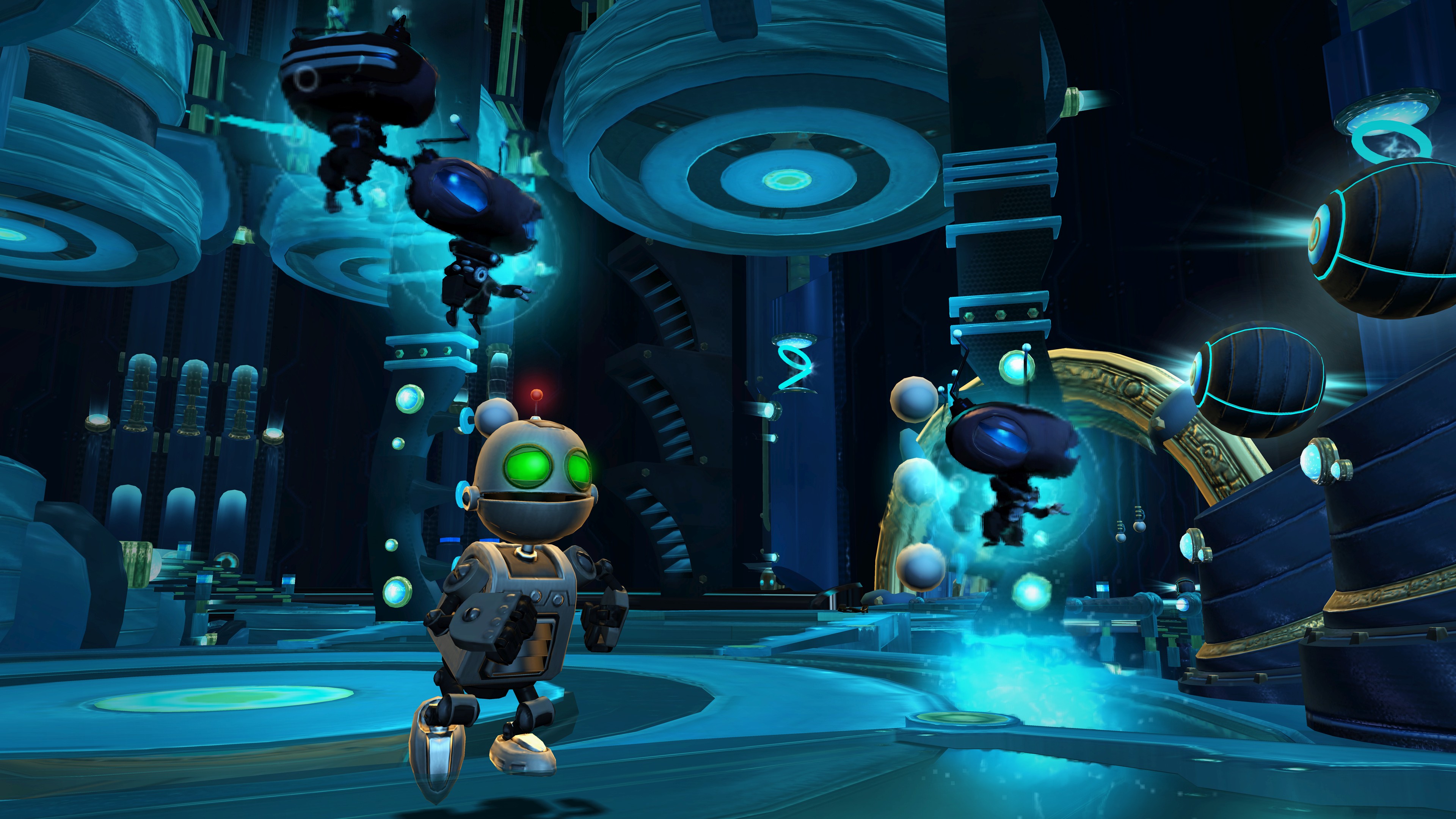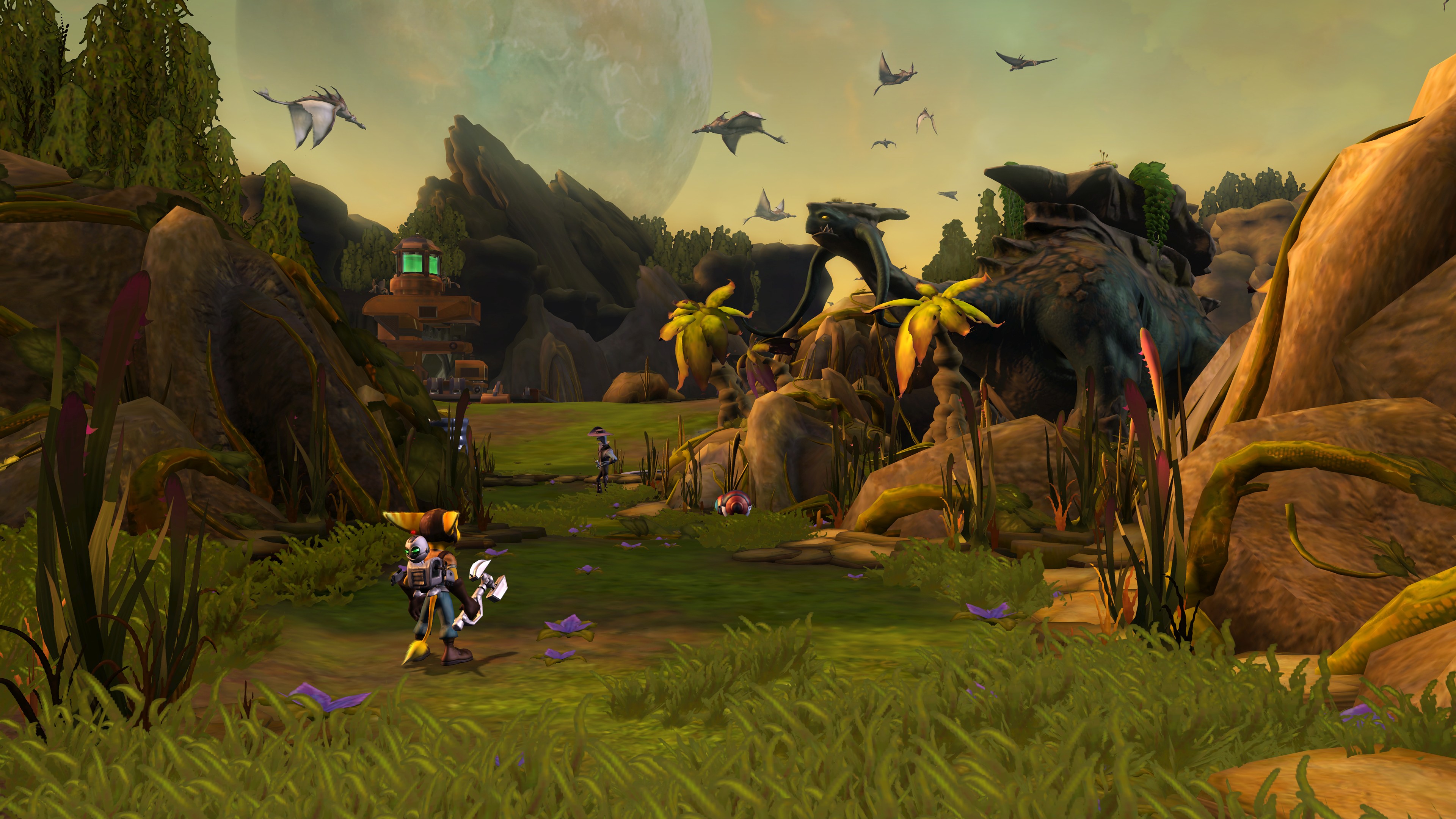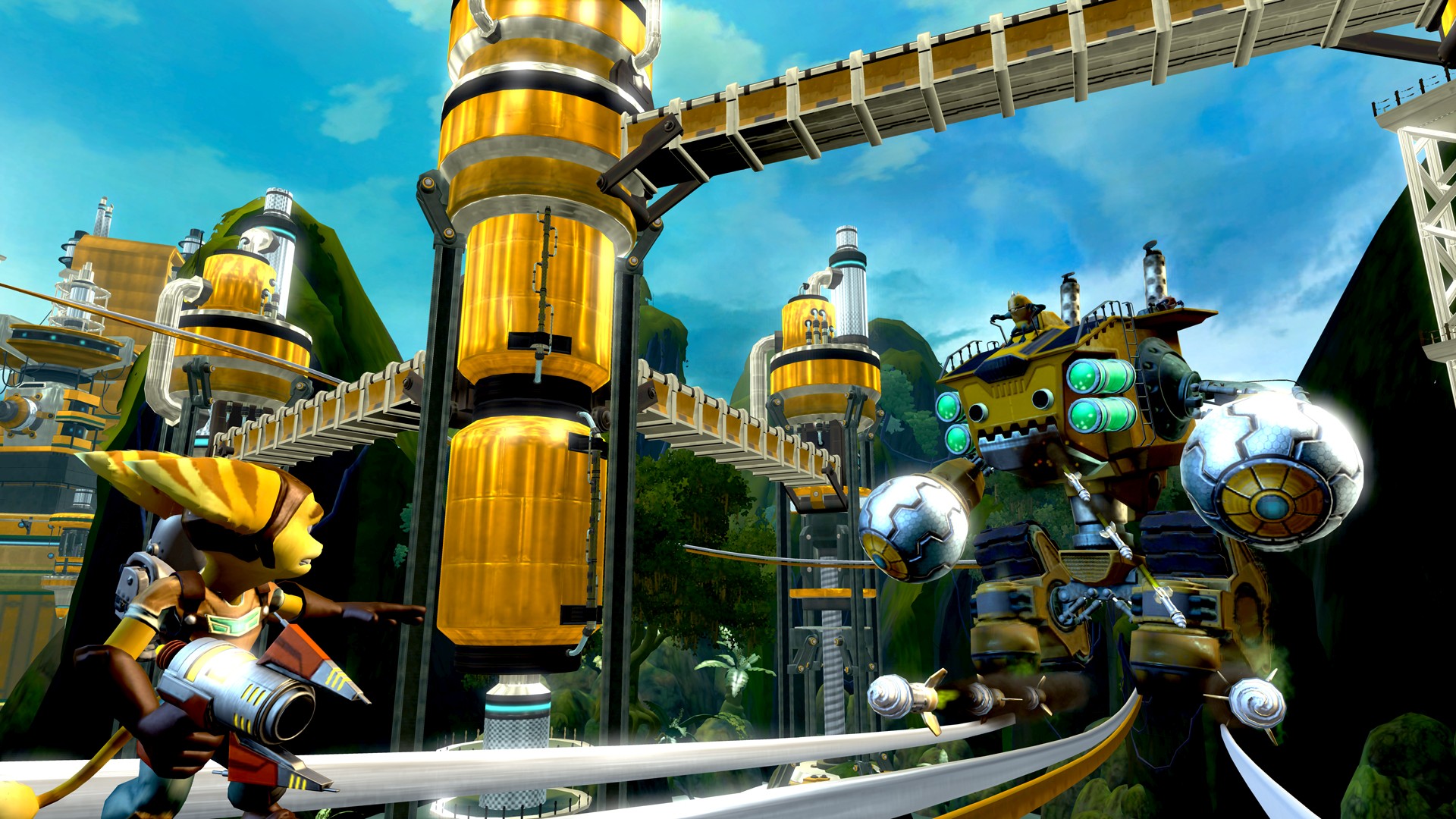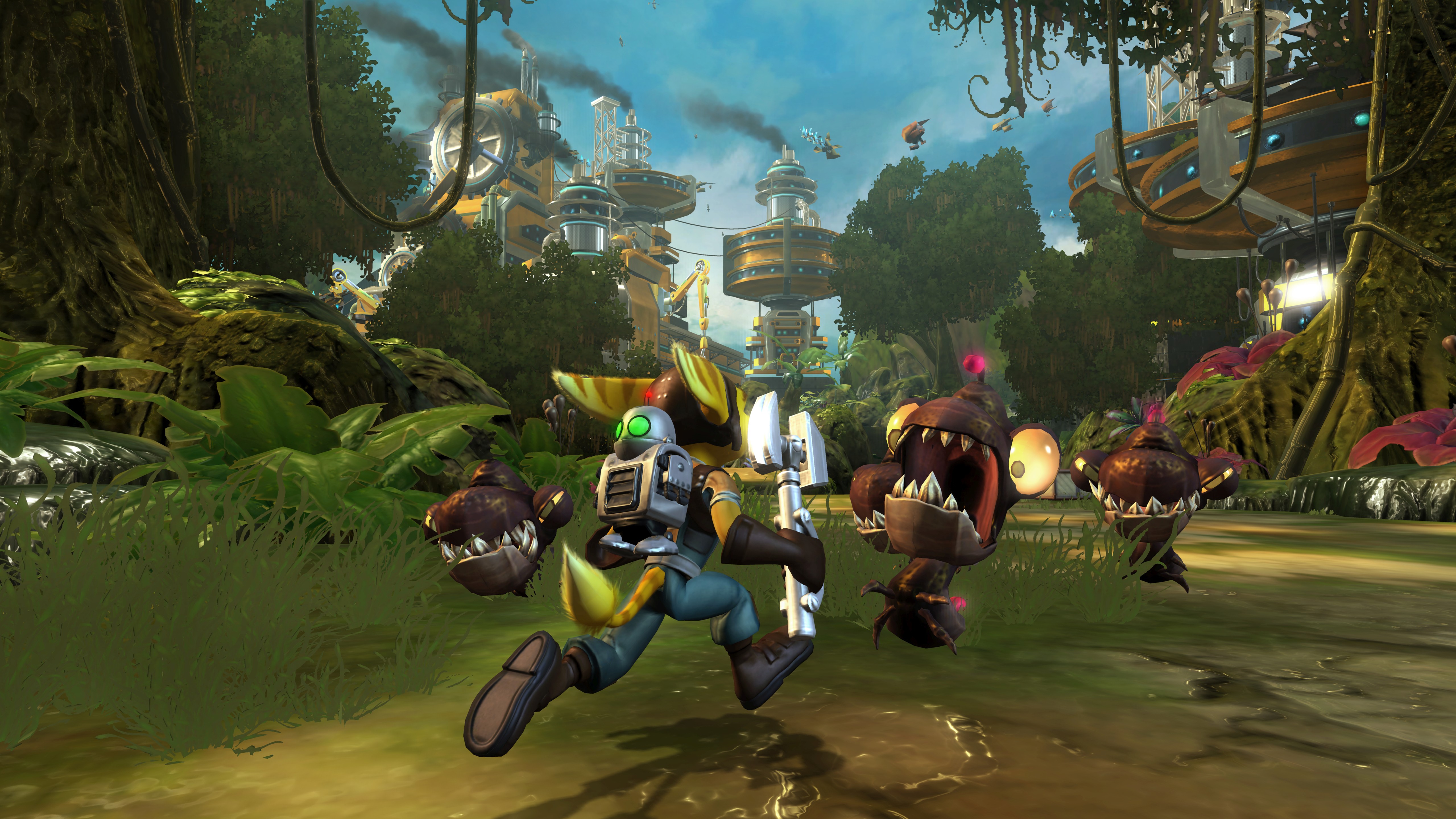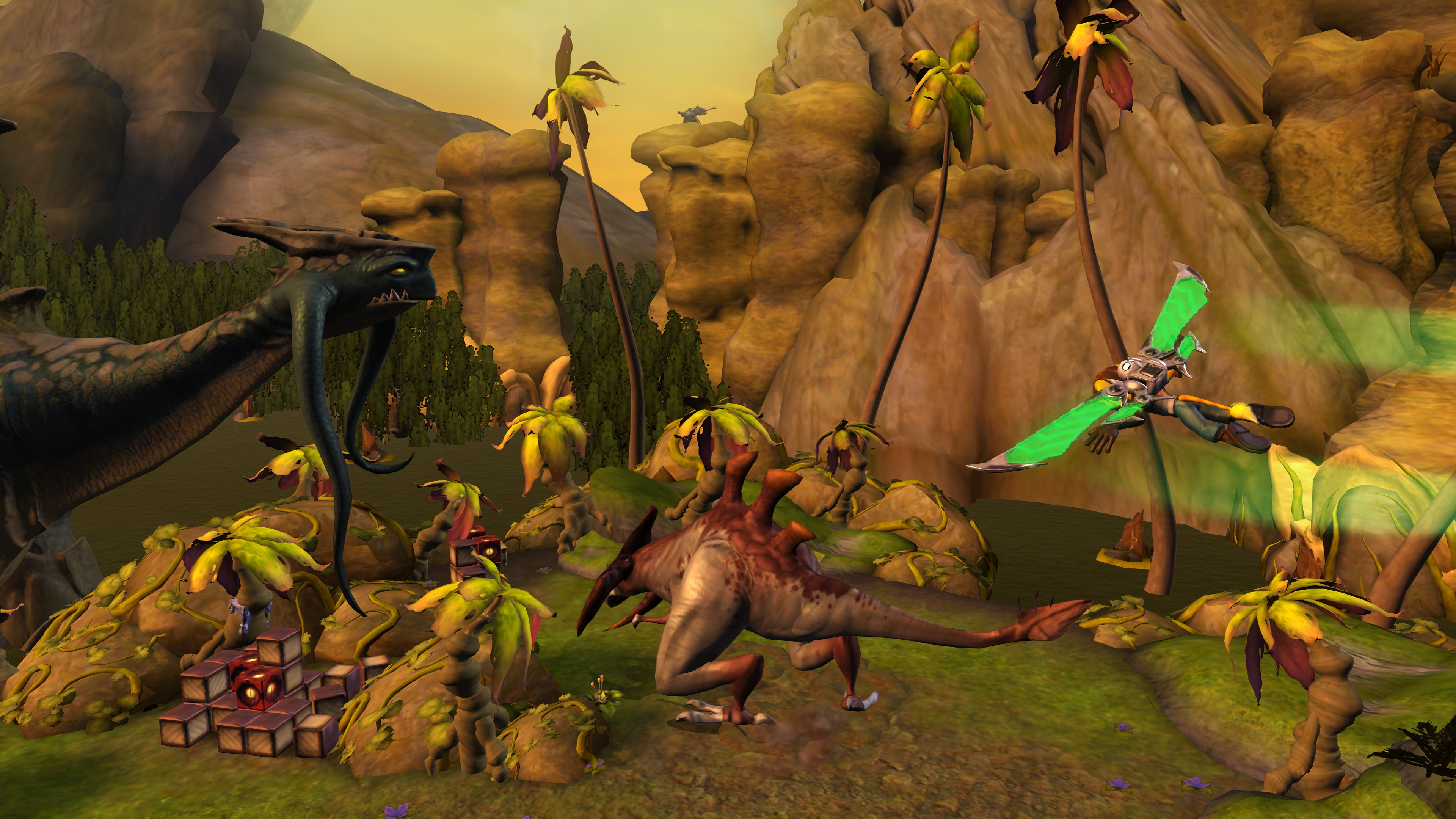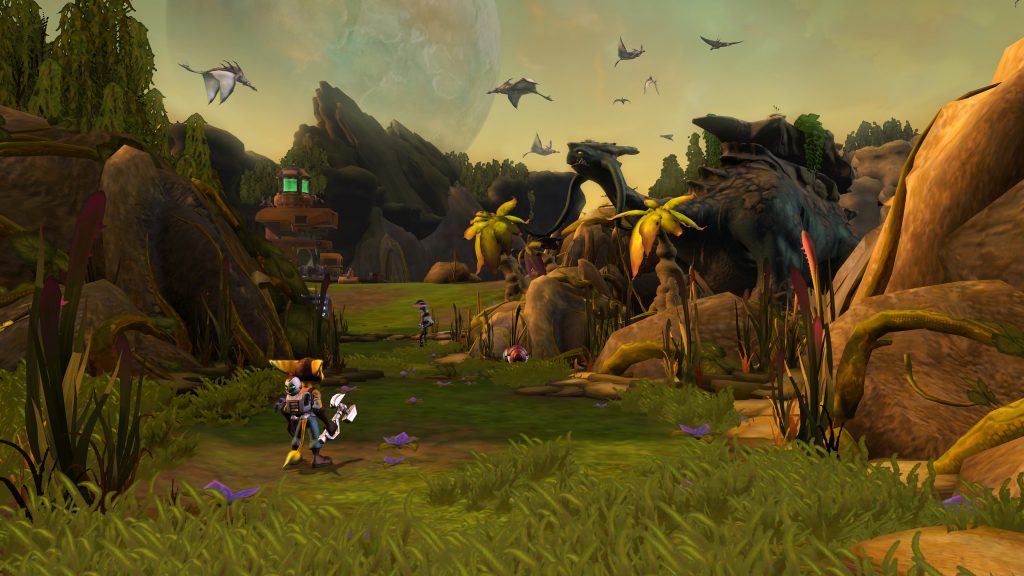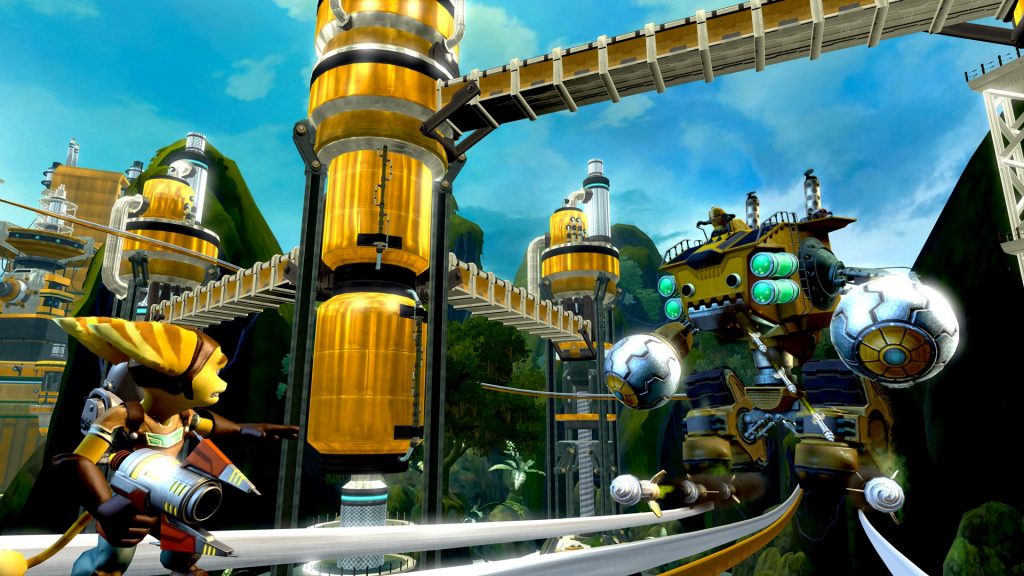Ratchet & Clank: Tools of Destruction Review
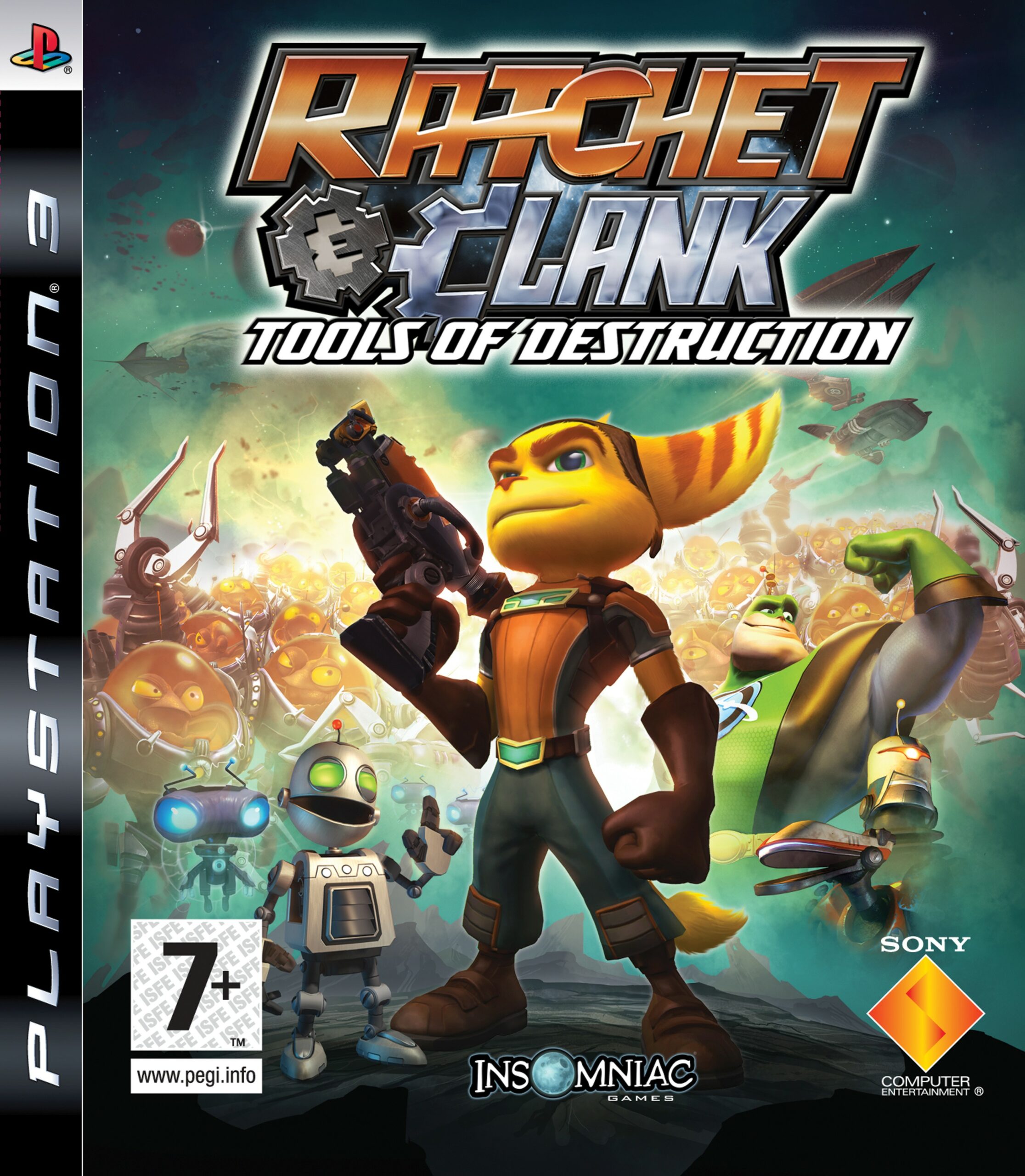
A decent PlayStation 3 exclusive third-person shooter.
Story
Ratchet and his robot companion Clank are currently visiting the planet Kerwan when they receive a call for help from Captain Qwark. The city is under siege and Ratchet decides that he will lend a helping hand, but little does he know that the one orchestrating this siege is none other than the last cragmite in the universe known as Emperor Tachyon. The emperor is after Ratchet because he is also the last of his kind. Ratchet soon finds out that Emperor Tachyon blames Ratchet’s species, the Lombaxes, for the extinction of the cragmites. After a brief encounter with the emperor, the heroes escape an armada of robotic war machines and the adventure begins.
The Game
Ratchet & Clank: Tools of Destruction is the first Ratchet & Clank game to appear on the PlayStation 3. Although there are numerous games in the series for PSP and PlayStation 2, the story line in this game isn’t directly linked to any previous game.
Ratchet & Clank: Tools of Destruction is two things – it is both an action game and a platformer game. These two prime game elements are mixed together to form one great adventure with huge levels with lots of exploration, challenges and action in them.
The game is played from a third-person shooter style camera which captures the onscreen action perfectly, and being able to adjust the camera does make the platforming elements enjoyable.
Content
Apart from regular shooting and running, certain levels have mini-games in them, be it in the beginning, in the middle or the very end. One recurring mini-game is where you are falling through the sky and you must maneuver past obstacles or enemy rockets. There are a few others as well like bypassing electronic doors or cutting through walls with a laser beam. All these mini-games have one thing in common; they are controlled with the PlayStation’s Sixaxis control scheme, which works rather well. However if you fail too many times the game will politely ask you if you want to switch to a more conventional control scheme, which in itself is an indication of something.
The general control scheme is however very easy to learn and use and it comes naturally as you play the game.
While playing you are given a wide range of weapons, gadgets and devices to make it through the many obstacles found in the game. The weapons you can use come in many varying shapes and sizes. Some are more direct such as rocket launchers while others work like stationary turrets such as the “Nano Swarmer”. Any weapons you carry can quickly be swapped to any other weapon through the use of a quick switch function. In fact, there are two different ways to switch between weapons and gadgets. The most basic way is done holding down the button: this brings up a new interface with all your equipment and since the game pauses while you browse your inventory there is no hurry. The second way to switch weapons is done by just tapping the button which will cycle through you current and the previous weapon you had, so it is only possible to have two different weapons ready for quick switching when using this method. Both functions are used constantly and surprisingly it doesn’t slow down the game one bit – it’s easy to use and understand which is perfect for a game like this.
Weapons are a huge part of the game. There are a total of 15 different weapons in the game, and thus there are plenty of ways to lay waste to whatever you are facing at any given moment.
There are some obvious balance issues going on as certain weapons are vastly more useful than others which are downright useless in comparison, for example the above mentioned “Nano swarmer” is incredibly useful and devastating while the “Razor claws” have so poor range that you will often get hurt in the process of killing enemies with it.
However the game is generous enough with resources so that you can easily acquire all weapons and upgrade them without having to put in a ton of additional hours of playing. This is a double-edged sword because it makes the game too easy but at the same time it’s also a positive thing not having to waste time replaying stages.
As mentioned you can upgrade your weapons in two different ways. One is done simply by killing enemies with the weapon you want to upgrade. This upgrades the weapons damage and when it reaches maximum level the weapon changes and receives an additional effect. The other way to upgrade is only accessible through the weapon shop. There you can spend Raritanium which is a very valuable resource in the game, and it can be obtained by finding chests or killing enemies.
When upgrading your weapon you can increase damage, fire rate, range and much more but this is based on what weapon you are upgrading, meaning that you cannot always upgrade the same statistics. When everything is upgraded on a weapon the last upgrade usually gives the weapon a new effect such as freezing bullets, penetrating bullets, bullets that set the floor on fire, poisonous bullets and much more.
The gadgets you use are mostly used automatically whenever the time is right, like the Gravity boots which allows Ratchet to walk on walls etc, but this can only be done on specific locations. There are several similar gadgets that are used throughout the game such as the Grindboots and Robo-Wings. The gadget called the Helipack which allows you to glide through the air to extend your jumping range is, however, an example of a gadget that can be used whenever you feel like it.
The game clocks in about 10 hours of play time and with roughly 19 levels spread across and around nine unique planets it is set to make a fresh experience all the way through. Though the levels are generally linear they have enough secrets in them as to maintain a more open feeling.
Graphics
Being a colorful game bursting with sights and sounds, this game has really well done visuals and the character- and environmental animation is also great. The settings that you’ll get to explore vary from swamps, prison colonies, jungles, space colonies, frozen planets and so on. The amount of different environments certainly makes the game look a lot better than your average platformer fare.
Each planet has it’s own look and feel but with a couple of similarities to make it feel more authentic – it all feels quite unique and believable, so the design is really good and well thought out. The graphics are certainly something that the developers have done well, and the art style fits the atmosphere of the game perfectly.
Sound
The voice acting is a mixed bag but for the most part it’s well done and certainly entertaining. The characters feel alive and the characteristics are captured beautifully. The other sounds are at times dull but most weapons, creatures etc do make the game world come alive with their own distinct sounds.
The cartoonish soundtrack however does not leave its mark as easily as one would think. It’s forgettable most of the time and it could have contributed much more to the rather unique atmosphere of the game. Generally speaking it’s passable though.
Summary
Ratchet & Clank: Tools of Destruction is a decent game with overall great presentation and production values. The game lacks any sort of multiplayer modes, and there are no difficulty settings. The replay value that is offered is minimalistic; after completing the game you are offered to play the game on a higher difficulty but then it is too late really, as most players are then ready to move on to other games.
So one of the biggest problem is also one of the very things that make the game so accessible to so many people, namely the difficulty. The game is extremely easy but luckily this does not affect the length of the game; it’s long enough and it feels like a good starting point for anyone wanting to give the franchise an honest chance.
Simply put; Ratchet & Clank: Tools of Destruction is a decent game, perhaps better suited to a casual gamer.
